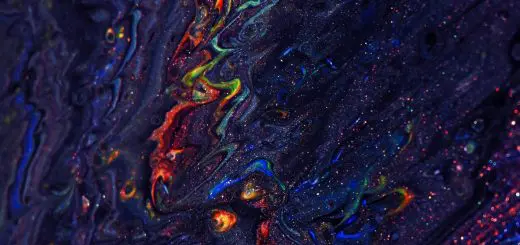Hathor: The Cow Goddess of Love and Joy

Looking for more amazing products? Check out our online store and explore our collection here! Happy shopping!
Before diving in, please note: This post is for informational purposes only. If you’d like to know more about how we approach topics, feel free to check out our friendly Disclaimer Page.
Hey there, amazing readers! 
We’re committed to delivering quality posts, and your support (even just sticking around despite the ads) means everything to us. So, bear with us, and thanks for helping us keep the good vibes rolling. Now, on to the fun stuff!
TRANSLATE BUTTON AT THE END OF THE ARTICLE
Overview
Hathor, the cow goddess of love and joy, holds a significant place in ancient Egyptian mythology and religion.
Depicted as a cow or as a woman with the head of a cow, Hathor symbolized femininity, love, fertility, and joy.
Her origins date back to the pre-dynastic period of ancient Egypt, and her cult grew in popularity throughout the centuries.
This article explores the origins, mythology, symbolism, worship, and influence of Hathor in ancient Egyptian society.
It also delves into her connection to love, fertility, music, and dance, and her role as a protector of pharaohs and the dead.
Finally, it touches upon Hathor’s influence on other ancient civilizations and modern interpretations of her significance.
Origins and Mythology of Hathor
The origins of Hathor can be traced back to pre-dynastic Egypt, where she was initially worshipped as a cow deity associated with fertility and nourishment.
Over time, Hathor’s mythology expanded, and she became associated with love, joy, motherhood, and music.
In the ancient Egyptian creation myth, Hathor was believed to be the daughter of the sky goddess Nut and the earth god Geb.
She was also considered the mother of the sun god Ra, giving birth to him every morning.
According to mythology, Hathor played a pivotal role in the rejuvenation of Ra.
In one version of the myth, Ra grew old and weak, and Hathor transformed into the lioness goddess Sekhmet to punish humanity for their disobedience.
However, she became so bloodthirsty that Ra feared she would annihilate all of humanity.
To prevent this, Ra flooded the earth with beer dyed red to resemble blood.
Hathor, mistaking the beer for blood, drank it and became intoxicated, eventually returning to her loving and nurturing form as Hathor.
Hathor: A Key Figure in Ancient Egyptian Religion
Hathor held great importance in ancient Egyptian religion and was revered as one of the most significant goddesses.
She was considered a protective deity, safeguarding the pharaohs and the people of Egypt.
Her benevolence extended to all aspects of life, from love and fertility to music and celebration.
Hathor was also perceived as the queen of the heavens and the mistress of the afterlife, guiding souls into the realm of the dead.
Symbolism and Iconography of Hathor
Hathor was often depicted as a cow or as a woman with the head of a cow.
The cow represented fertility, nourishment, and the life-giving qualities associated with motherhood.
Additionally, Hathor was frequently depicted wearing a solar disk with cow horns, symbolizing her connection to the sky and the sun.
This iconography highlighted her role as a celestial deity and her association with rejuvenation and new beginnings.
Temples and Worship of Hathor
Temples dedicated to Hathor were widespread throughout ancient Egypt.
The most famous of these was the Temple of Dendera, located near Luxor.
The temple complex at Dendera was dedicated to Hathor and served as a center for her worship and celebration.
Pilgrims and devotees would travel to the temple to seek blessings, perform rituals, and offer sacrifices to the goddess.
The Role of Hathor in Ancient Egyptian Society
Hathor played a multifaceted role in ancient Egyptian society.
She was not only a deity to be worshipped but also a source of inspiration and guidance for the people.
Explore the Path to Spirituality and Enlightenment – Start Here.
Hathor’s association with love, fertility, and motherhood made her particularly revered by women seeking assistance with childbirth and nurturing their families.
She was also believed to protect the pharaohs, ensuring their prosperity and divine rule.
Hathor’s Connection to Love, Fertility, and Motherhood
Hathor’s association with love, fertility, and motherhood was central to her mythology and worship.
Ancient Egyptians believed that Hathor was responsible for the conception and nourishment of newborns.
Women would often invoke her assistance during childbirth, seeking her blessings for a safe delivery.
Hathor was also viewed as a loving and nurturing mother figure, providing guidance and support to those who worshipped her.
Hathor’s Associations with Music, Dance, and Celebration
Hathor was closely associated with music, dance, and celebration.
She was believed to be the patroness of musicians and dancers, and her worship often involved lively festivals and performances.
Music and dance were considered integral to religious rituals dedicated to Hathor, as they were believed to invoke her joyful and loving presence.
The sistrum, a musical instrument associated with Hathor, was frequently used during her ceremonies.
Hathor’s Transformations and Depictions in Art
Hathor was depicted in various forms and with different attributes in ancient Egyptian art.
Her most common forms were as a cow or as a woman with the head of a cow.
However, she also appeared as a lioness, a woman with the sun disk, or simply as a woman with feminine attributes.
These transformations and depictions showcased the diverse aspects of Hathor’s character and her influence over different realms of life.
Hathor: The Protector of Pharaohs and the Dead
Hathor was not only associated with love, joy, and fertility but also held a role as a protector of pharaohs and the dead.
She was believed to guide the souls of the deceased into the afterlife, providing them with comfort and ensuring a smooth transition into the realm of the dead.
Hathor’s protective role extended to the pharaohs, safeguarding their rule and ensuring their divine right to rule over Egypt.
Hathor’s Influence on Other Ancient Civilizations
The influence of Hathor extended beyond the borders of ancient Egypt, reaching other civilizations in the ancient Near East.
In particular, her connections to fertility, love, and joy resonated with neighboring cultures, leading to the adoption and assimilation of her characteristics into their own pantheons.
Hathor’s influence can be seen in the worship of other goddesses associated with these attributes, such as Ishtar in Mesopotamia and Aphrodite in ancient Greece.
Modern Interpretations and Reverence of Hathor
In modern times, Hathor continues to inspire and captivate individuals with her enduring symbolism and attributes.
Many people are drawn to her connection to love, joy, and femininity, finding solace and inspiration in her mythology.
Hathor’s devotion is not limited to ancient Egyptian religion, as she has garnered a following among modern practitioners of alternative spiritual traditions, such as neopaganism and contemporary witchcraft.
Conclusion
Hathor, the cow goddess of love and joy, holds a significant place in ancient Egyptian mythology and religion.
From her origins as a cow deity associated with fertility, Hathor’s mythology expanded to encompass love, joy, music, and dance.
Her role as a protector of pharaohs and the dead showcased her importance in ancient Egyptian society.
Hathor’s symbolism and iconography, as well as her temples and worship, illustrate the profound reverence she commanded.
Her influence extended to other ancient civilizations, and her significance continues to resonate in modern interpretations.
Hathor’s enduring legacy as a goddess of love and joy ensures that her story will captivate and inspire generations to come.

The Enlightenment Journey is a remarkable collection of writings authored by a distinguished group of experts in the fields of spirituality, new age, and esoteric knowledge.
This anthology features a diverse assembly of well-experienced authors who bring their profound insights and credible perspectives to the forefront.
Each contributor possesses a wealth of knowledge and wisdom, making them authorities in their respective domains.
Together, they offer readers a transformative journey into the realms of spiritual growth, self-discovery, and esoteric enlightenment.
The Enlightenment Journey is a testament to the collective expertise of these luminaries, providing readers with a rich tapestry of ideas and information to illuminate their spiritual path.
Our Diverse Expertise
While our primary focus is on spirituality and esotericism, we are equally passionate about exploring a wide range of other topics and niches 

To ensure we provide the most accurate and valuable insights, we collaborate with trusted experts in their respective domains 
Our blog originally focused on spirituality and metaphysics, but we’ve since expanded to cover a wide range of niches. Don’t worry—we continue to publish a lot of articles on spirituality! Frequently visit our blog to explore our diverse content and stay tuned for more insightful reads.
Hey there, amazing reader! 
Check out our store here and take a peek at some of our featured products below! Thanks for being awesome!
















